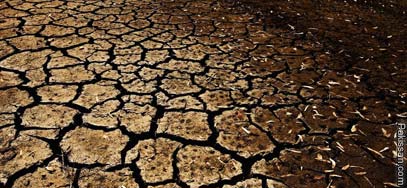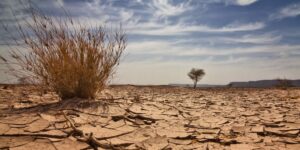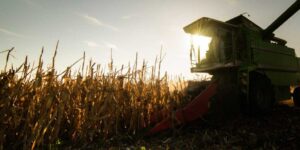SOURCES OF WATER
 God has blessed Pakistan with abandoned water resources, with water flowing down the Himalayas and Karakorum heights, from the world’s largest glaciers, a free and unique bounty of nature for this land of alluvial plains. As a result of this natural resource, today we have the world’s marvelous and the largest irrigation system that irrigates over 16 million hectors of land, out of 34 million hectors of cultivable land available. Basically we have two major sources of water i.e. surface water & ground water.
God has blessed Pakistan with abandoned water resources, with water flowing down the Himalayas and Karakorum heights, from the world’s largest glaciers, a free and unique bounty of nature for this land of alluvial plains. As a result of this natural resource, today we have the world’s marvelous and the largest irrigation system that irrigates over 16 million hectors of land, out of 34 million hectors of cultivable land available. Basically we have two major sources of water i.e. surface water & ground water.
SURFACE WATER
In surface water we have three hydrologic units. First one is Indus Basin River.
(a) Indus Basin River
At the time of independence, we had about 67 maf water available for diversion; this amount increased to about 85 maf by 1960. In 1960 Pakistan signed a water treaty “Indus water treaty” with India, which brought major changes in the sources of water for Pakistan. In that treaty the right of three eastern rivers i.e. Beas, Sutlej and Ravi was given to India. Now the Indus river basin constitutes of the mountain basins Indus plain, Karachi plains and desert areas of Sindh. Its principle rivers and tributaries are Indus, Shyok, Gilgit, Astor, Siran, Kabul joined by Jhelum, Chenab and Sutlej. It covers an area of 516,600 sq. km. its source of water are snowing, glacier melting and rainfalls. From this annually 141.67 maf of water is being received.
(b) Closed basin Kharan desert
It consists of areas of mountain basins of Quetta and basins of tributaries draining in to Kharan desert. its main rivers are Pishin Lora, Baddo Rakhshan, Mashkhel and many other streams. It covers an area of 120,100 sq. km. its main sources of water are rainfall and nominal snow. Here we are getting approximately 4.5 maf of water.
(c) Makran coastal basin
Makran coastal basin constitutes of streams of Malir, Hub, Porali, Kud, Hingol, Nai, Mashhai, Dasht, Nihing and Kech. It covers an area of 122,400 sq. km and its main source of water is rainfall. From this basin 0.78 maf of water.
Now coming towards groundwater sources.
Ground water:-
The Indus plains constitute about 34 million hectors (over 85 million acres) of cultivable land. The recharge or absorption to the ground is around 72 maf, out of which about 48 maf is in the command of Indus basin irrigation system (ibis). Ground water is also found in some rain-fed (barani) lands and inter-mountain valleys at depths varying from 100 to 200 feet.
After pointing out the main sources of water, let’s have a glance of the water available to us through them. We receive an average of 141.67 maf of water from western rivers. Eastern rivers contribute 8.47 maf of water. About 4 maf of water is received from outside Indus plains. Water available above rim stations is 5.28 maf whereas rainfalls below rim also contribute about 14 maf of water. Also about 66.89 maf ground water is available to us. In other words a total of 240.22 maf of water is available to us from the present sources.
For controlling the water resources and for its effective utilization lets have a glance at the present storages and its capacities.
Water reservoirs / capacities:-
Pakistan is having three basic reservoirs, namely mangla dam reservoir, Terbela dam reservoir and Chashma barrage reservoir. more small reservoirs like Warsak, Baran dam hub, Khanpur, Tanda, Rawal, Simly, Bakht khan Hamal lake, Mancher lake, Kinjhar lake and Chotiari lake Arealso included as small storage. The storage capacity of these reservoirs is as shown on the view foil.
I shall be discussing only the major reservoirs only.
(a) Terbela dam reservoir
World’s largest earth and rock filled dam was built at Terbela on river Indus in 1976 with a gross capacity of 11.62 maf and a live storage capacity of 9.68 maf. With the passage of time, due to silting, 24.6% of the storage has been lost and now it has a live storage of 7.295 maf.
(b) Mangla dam reservoir
Mangla reservoir is the second major storage of Pakistan. It was built in 1967 on river Jhelum with a gross capacity of 5.882 maf and live storage of 5.41 maf. Again due to siltation it has lost 13.2% of its storage and presently can store 4.636 maf of water.
(c) Chashma barrage reservoir
Chashma barrage is situated on river Indus and was built in 1972 with a gross storage of 0.870 maf and live storage of 0.717 maf. It has also reduced its storage capacity by 39.3% and is left with a storage capacity of 0.435 maf.
UTILIZATION OF WATER
In Pakistan we utilize the water available to us for different purposes. The basic utilization is for irrigation and then used for power generation, drinking and also provided to some Industries.
(a) Irrigation
Out of 240.22 maf, 172.21 maf water is utilized for irrigation purposes as shown on the view foil. In this the canal diversions is 105.23 maf; system loses are 144-40; rainwater is 6.0 maf; ground water is 41.30 and utility above rims is 5.28 maf.
(b) Power generation
Water released by the hydropower plants returns to the river system. The reservoirs are operated on priority bases only for irrigation. Recent increase in thermal generation has reduced the potential conflicts between water releases from reservoirs for hydropower generation and irrigation. Now most of the annual storage is utilized for irrigation and not for hydropower, but conflicts do arise at times.
(c) Drinking
Most of the rural and urban water is supplied from ground water through tube wells and hand pumps except few cities like Karachi and Islamabad/Pindi. Total urban and rural (domestic and commercial) requirements estimated is 10-15% of the surface water, out of which 80% return to the system, however with degraded quality. Net consumption is normally about 2% of the total water available.
(d) Industry
Water is also utilized in Industries basically for cooling purposes and also in manufacturing processes. This utility is less than 1%.
Shortage of water
As we all know that now a days our country is facing severe shortage of water. There are two main reasons, one natural due to prolong drought—which is beyond the control of a man, and the other due to the gross negligence in the development and mis-management of water resources. The average annual inflow of the Indus and its tributaries is i41.67 maf, of which 97% is used in agriculture and the remaining 3% for domestic and Industrial purposes. Out of 141.67 maf, around 106 maf is annually diverted in to one of the largest but in-efficient irrigation system. The remaining 36 maf goes into the sea unused – a total loss –. Out of 106 maf, diverted into an extensive irrigation net work, more than 50% is lost during the changeling and the field application before it reaches the crop root zone.
In the years when the rainfall is normal or above, the country generally does not face any water shortage, where as in below average rainfall period it does. This has happened just few weeks earlier. i was sitting with secretary irsa, in connection of my vision, and he said that they are reducing the quota of punjab and sind by 5% because of no rains and that the level of mangla has gone below dead level. After three days i was again with him and he said that now we are increasing the quota of all the provinces, because we are in happy situation due to present heavy rains and snowfalls. The planners, it is assumed, are responsible to foresee and carry out effective water resources development and management planning to meet the future challenges. However, sadly this is not practiced which ultimately lands the state into such uncalled situations.
Impact on economy / society
As I said earlier that agriculture is our backbone and the water flowing in the channels to the crops is its blood line—and if there is no or less water then we should be prepared for facing problems economically as well as socially. According to the estimates of federal government, the agriculture sector would suffer a loss of about Rs. 90 billion because of drought. Since agriculture has remained a major source of shouldering the already crippled economy, it has a vital role to play particularly in terms of food security and employment of the ever-burgeoning population of the country. It contributes around 35 % to the gnp and employs about 44% of labor force. It also contributes 65% of our export earning. The adverse effects of water shortage on agriculture would have a spiraling effect on the prevailing level of poverty.
(a) Less water means less agricultural yields and to fulfill the food requirements of the nation, we will be dependent on other countries.
(b) Raising livestock is the main source of livelihood of rural areas. it is also an important economic activity, which contributes 9.7% of gdp, will be affected due to shortage of water.
(c) Orchards of pakistan bring home a healthy amount of foreign exchange, which can be affected due water shortage.
(d) Due to less production of main crops, which are wheat, cotton, sugar cane and rice, the Industries related to them will suffer adversely.
(e) Then due to drought and more dependency on ground water for irrigation, the water table will go down, and this will cause water constrains to the population.
(f) Less agricultural outputs will compel people to head towards urban areas for jobs, which will increase the unemployment further.
(g) The distribution of water is controlled from the center by irsa (Indus river system authority) as per 1991 agreement between the provinces. Now the shortage of water will cause disputes between the provinces, which may cause harm to the national integrity.
Analysis
Pakistan is one of the poorest countries of the world, where as on the other hand it is one of the richest in its population increasing capabilities. Our population has surpassed the 140 million mark by now and is still increasing at an alarming rate of about 3%, which definitely needs to be checked. On the other hand the growth rate of agriculture is decreasing due to water shortages. To keep up the pace of agricultural growth comparable to population growth, we must bring additional lands under cultivation. in order to achieve the required growth targets in agriculture, we needed an estimated amount of 149 maf in 2000 and will need 215 maf year 2013 and about 277 maf by year 2025. this scenario warns that pakistan has already has slided from a water happy country to a water scarce country in 1994 and already shortage of over 40 maf persists, which may increase to a shortage of 108 maf and 151 maf by years 2013 and 2025 respectively. This water shortage has been threatening the federal structure of the country. Our reluctance to treat water as an economic good and inadequate recognition of the environmental concerns associated with current practices have led us towards this catastrophic situation. Further more its remedy is an urgent one, otherwise it could trigger water riots and finally lead to social, if not political, catastrophe. Since no additional water is available, it is the time to recognize our responsibilities and start taking steps in the right direction.
So for overcoming the water crises following steps are recommended
Recommendations
The national water strategy must be based upon two essential elements covering
- Water developments
- Water management
The water development strategy is largely based upon construction of new storage reservoirs where as the water management strategy will help in reducing the present losses.
Water development
In this construction of following dams should start immediately:-
(a) Chasha dam
It would be located 200 miles upstream of terbela on river Indus. its gross storage capacity would be 7.3 maf and live storage 5.7 maf. Its power generation capacity would be 3360 mw.
(b) Kalabagh dam
Kalabagh dam site is located 132 miles down stream of Terbela. Its gross storage would be 6.1 maf. It would have a power generation of 3600 mw. Here I shall further suggest that the construction of Kalabagh be under taken only, once all the provinces are convinced and willing to cooperate.
(c) Thal reservoir
It would be located on the right bank of Chashma – Jhelum link canal, along the western bank of river Jhelum. Its reservoir would have gross capacity of 2.3 maf.
(d) Raised Mangla dam
in this the present Mangla dam would be further raised by 40 ft and thus increasing its gross capacity to 9.5 maf. In addition, its power generation capacity would be increased by 15%.
(e) Mirani dam
The dam is located on Dasht River about 48 km of Turbat town in Mekran division. Its main objective is to provide water for irrigation. Its gross storage is 0.30 maf.
(f) Gomalzam dam
It is located at Khajori Kach on Gomal River in South Waziristan, about 75 miles from Dera Ismail Khan. Its main objective will be to irrigate 132000 acres of land, power generation of 17.4 mw and flood control.
From these projects we shall be able to store additional 20maf of water.
Water management
Managing water resources is the need of time, and we in Pakistan already short of water, must chalk out a strategy. In this endeavor can be made to save around 1.3 maf of water from existing losses. following is recommended in this regard:-
- Presently the losses occur due to seepage, infiltration and leakages etc. seepage results in water logging and these losses can be reduced or eliminated by lining the canals.
- In addition, people should be educated to conserve water by cooperation.
- Further more government should make laws on water conservation, like many western countries.
- The second largest contribution to the total water available comes from the groundwater sources. This source has been exploited and very well used by public and private tube wells. It can still provide over nine maf of water. This source can be exploited and judiciously used for irrigation purposes. How ever in some areas ground water is rapidly depleting due to excessive pumpage, authorities should take control in such areas to save them from depleting.
- Efforts be made to convert the present rotation based irrigation system to demand oriented system.
- The modern irrigation techniques, that is trickling, sprinkling etc, which have a potential to improve water distribution and its utilization.
- Authorities should take appropriate steps to curb the illegal extraction of water and ensure its equitable distribution.
- Presently irrigation department has failed to stop the illegal theft and extraction; thus irrigation distribution system needs to be privatized through water user associations.
- In addition, water, now-a-days is supplied to farmers at a very negligible cost and that is why they do not treat water as a precious resource; therefore there is a need to increase the water prices to make irrigators realize the importance of this asset.
- Farmer’s organizations, water user association, and private sector be involved in construction, operation, and maintenance of the irrigation system. Such associations are conceived as a mechanism for creating a cooperative frame work for improvement of watercourses.
Conclusion
The problems faced by the water sector in the country are many, acute and serious and it is also known that we can generate about 83 maf of more water. Therefore, building of more reservoirs and an effective management strategy are the needs of time. Also implementation of the recommendations will enable the country to meet the challenges, and achieve the objectives of integrated, efficient, environmentally and financially sustainable development and management of limited water resources. At the same time it will enable us to utilize every drop of our water for our bright future.








